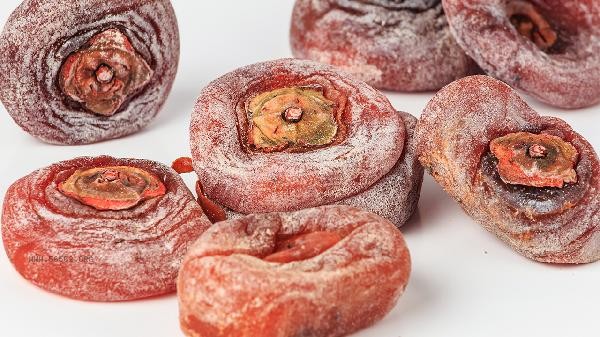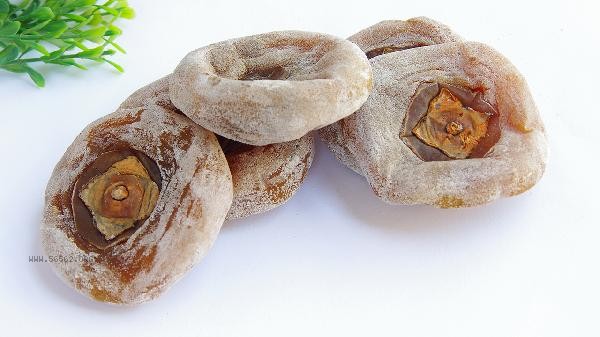The astringency of newly purchased persimmon cakes is usually caused by a high content of tannic acid, which can be improved through methods such as soaking in warm water, fruit ripening, freezing, alcohol de astringency, steaming and heating.

1. Soak in Warm Water
Soak persimmon cakes in warm water at around 40 degrees Celsius for about 12 hours. The water temperature should not be too high to avoid damaging the taste. Warm water can accelerate the dissolution and conversion of tannic acid, and the water can be replaced twice during the process to improve the de astringency effect. After processing, it is necessary to drain the water and dry the surface in the shade to avoid direct sunlight that may cause it to dry and harden.
2. Fruit ripening
Seal persimmon cakes with apples or bananas and store them in a cool place for about 2 days. The ethylene gas released by mature fruits can promote the polymerization and precipitation of tannic acid in persimmon cakes, while increasing the fructose content and improving sweetness. Attention should be paid to checking daily to prevent fruit from rotting and contaminating persimmon cakes. After ripening, they should be promptly taken out and stored separately.
3. Freezing treatment
Persimmon cakes should be naturally thawed after 24 hours of freezing. Low temperature can cause the breakdown of tannin cell structure and reduce astringency. The texture of thawed persimmon cakes will be softer, suitable for making persimmon puree or baking ingredients. It is recommended to pack and seal before freezing to avoid repeated freeze-thaw cycles affecting the taste.
4. Alcohol deastringency
Use a cotton swab dipped with a small amount of Baijiu to evenly smear on the surface of persimmon, and put it into a fresh-keeping bag to seal it for 1 day. Alcohol can penetrate the flesh and accelerate tannin conversion. After processing, it can be consumed by ventilating and drying. This method is suitable for quick de astringency in small amounts, but alcohol allergy sufferers should avoid using it.
5. Steaming and Heating
Steam for 10 minutes in water or boil in boiling water for 3 minutes. High temperature will cause tannic acid to denature and lose its astringency. Steamed persimmon cakes can be eaten directly or cooled to make pastry fillings. Pay attention to the fact that prolonged steaming and cooking time can cause loose fruit pulp. It is recommended to control the heating time.

It is recommended to choose mature products with natural frosting on the skin and elasticity when pinched for daily consumption of persimmon cakes. Persimmon cakes that have not been completely astringent should not be consumed on an empty stomach to avoid consuming them with high protein foods that may affect digestion. Individuals with weak gastrointestinal function should consume no more than 2 at a time, and after consumption, they can rinse their mouth with diluted salt water to reduce the irritation of tannins on the oral mucosa. Long term stored persimmon cakes should be sealed and moisture-proof. If mold spots appear, they should be discarded immediately.








Comments (0)
Leave a Comment
No comments yet
Be the first to share your thoughts!